GoPro Hero 8 Black Review
GoPro Hero 8 Black Review
The best GoPro yet, but others offer better value
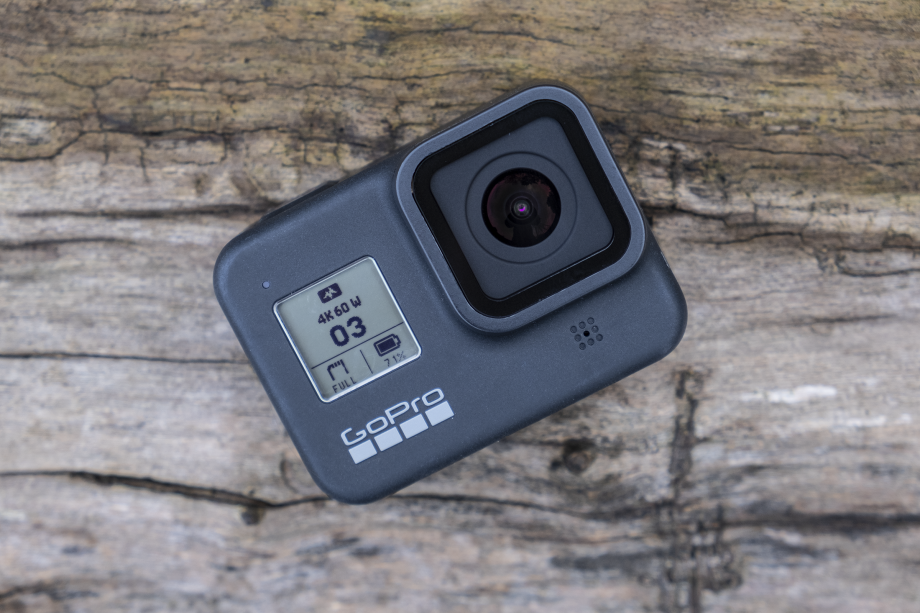
Verdict
The best GoPro yet, but without its Mod accessories the Hero 8 Black is only a mild improvement on its predecessor – and one that struggles to justify its £50 premium over the Hero 7 Black or DJI Osmo Action. There are minor upgrades to video quality, audio and HyperSmooth stabilisation, plus that useful built-in mount. Its UI tweaks also mean it's the most refined, customisable GoPro yet. But its price tag ignores the arrival of the cheaper DJI Osmo Action and the Hero 7 Black, which will remain on sale for £319 and is a better value action cam for most people.
Pros
- Built-in mounting fingers
- Minor improvements to video and audio quality
- UI now more customisable
- HyperSmooth stabilisation works in all resolutions and frame rates
Cons
- Expensive compared to Hero 7 Black and DJI Osmo Action
- Lens cover no longer removable
- Mods accessories not yet available
Key Specifications
- Review Price: £379
- Shoots 4K/60p and 1080/240p video
- New built-in mounting fingers (frame no longer needed)
- Waterproof to 10m
- Compatible with new Mod accessories (not yet available)
- HyperSmooth 2.0 electronic image stabilisation
- Voice control and 1080p livestreaming
What is the GoPro Hero 8 Black?
The Hero 8 Black is the successor to GoPro’s excellent flagship action camera from 2018, the Hero 7 Black.
The latter was a much-needed hit for GoPro thanks to one big new feature: HyperSmooth image stabilisation. This was a step up from previous GoPros and the competition, until the DJI Osmo Action arrived this year.
So what new tricks does the Hero 8 Black have up its wingsuit sleeves? It feels like GoPro’s internal hardware is pretty maxed out, because beyond some mildly enhanced shooting modes, the big story is actually accessories – collectively known as the Mods.
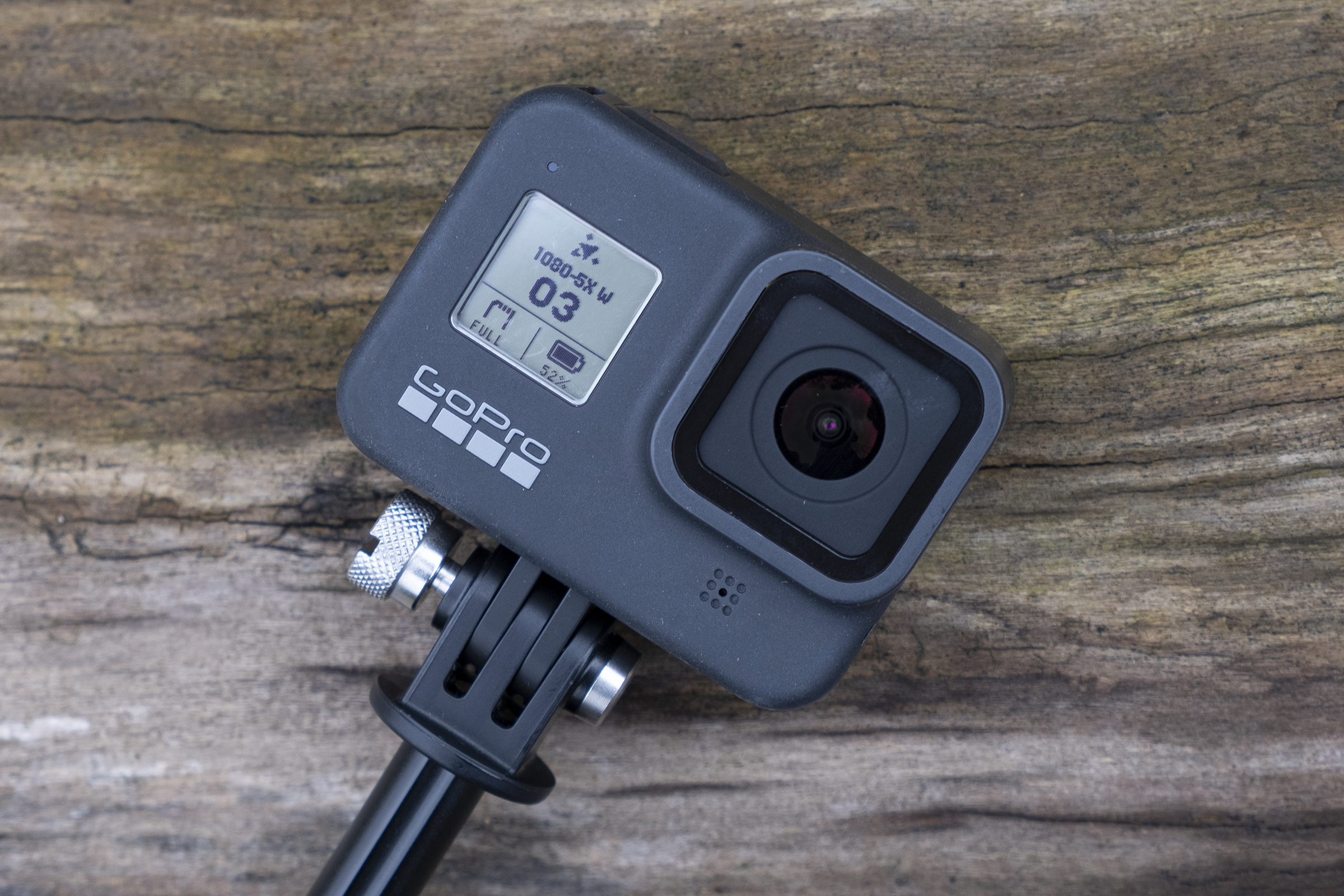
Rather than a knitted polo shirt and desert boots, these will bring a shotgun microphone (called the Media Mod), a waterproof LED light (the Light Mod) and a 2in screen (courtesy of the Light Mod) to the Hero 8 Black. The bad news is that these are unlikely to be available until 2020, with pre-orders starting in December 2019.
In the meantime, the Hero 8 Black brings some mild improvements to its predecessor’s staples (HyperSmooth, TimeWarp, SuperPhoto) plus a tweaked design with one major difference – built-in mounting fingers, which remove the need for a frame to connect the unit to tripods, helmets or whatever else you want to stick it onto.
Is this enough to make it the best GoPro for most people? While it’s the most accomplished and versatile GoPro so far, I don’t think these features are currently enough to justify its £50 premium over the GoPro Hero 7 Black (which remains on sale) or the DJI Osmo Action.
Hero 8 Black design – The built-in mount is great, but there are small backwards steps
The main design difference between the Hero 8 Black and previous GoPros are the new built-in mounting fingers in its base.
These mean you can attach it to standard GoPro accessories without needing the “frame”, which was introduced on the GoPro Hero 5 Black.
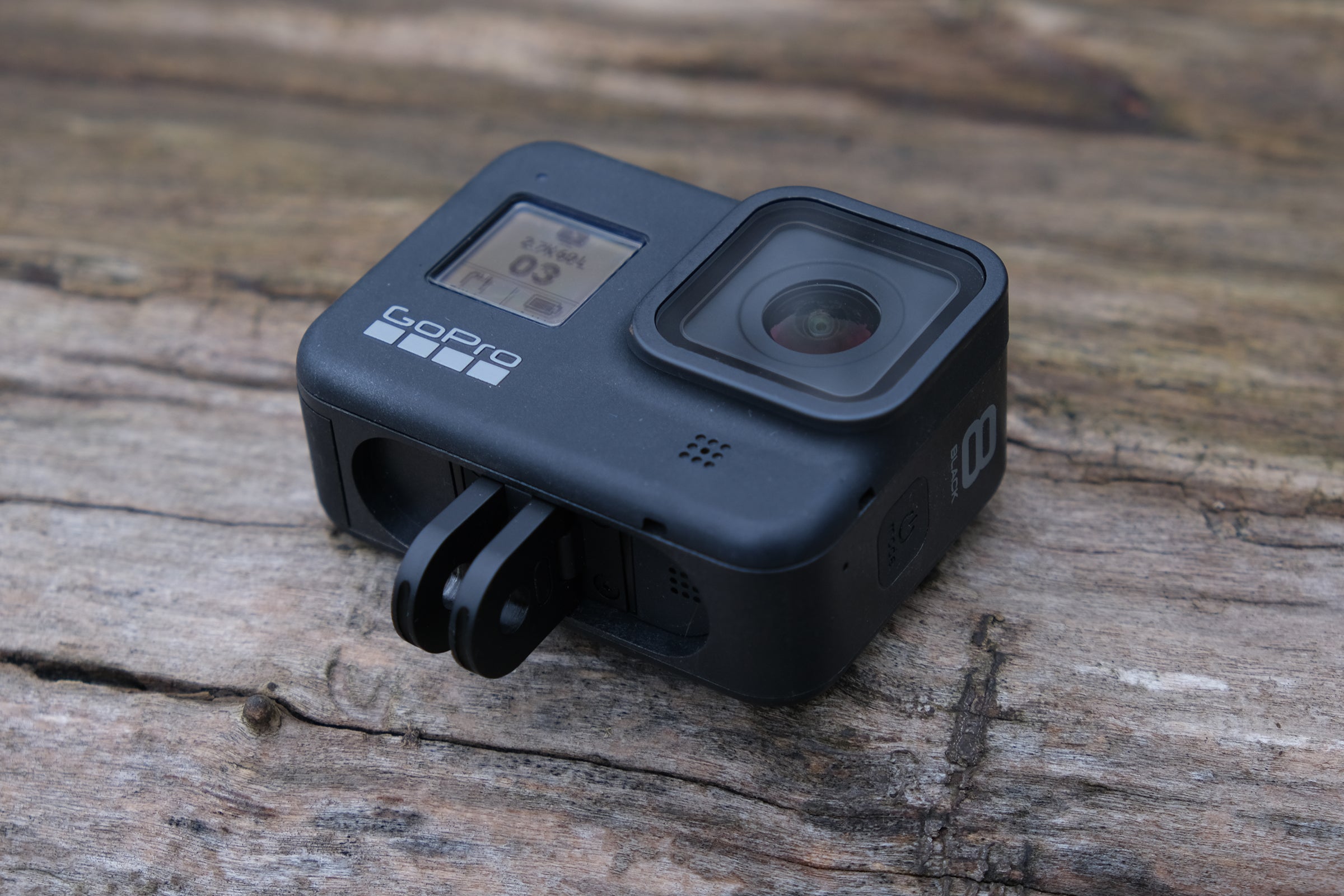
The main problem with this frame, beyond its added faff and weight, is that it doesn’t give you access to your GoPro’s battery, card slot or USB-C port. Unless you pull off the port cover, that is. But this affects its waterproofing, which is one of the main reasons to shoot with a GoPro.
So a small benefit of the Hero 8 Black’s built-in mount is that you can change batteries, swap out a card or give it a quick charge while it’s still mounted on something.
However, the main reason for this change is that it means the Hero 8 Black is compatible with a new range of accessories, called the Mods.
Unfortunately, they’re unlikely to be available until 2020, with pre-orders starting in December 2019. In the meantime, the Hero 8 Black’s design doesn’t really offer anything that you’d greatly miss out on by going for the GoPro Hero 7 Black.
On the plus side, it does have a new wind-optimised front microphone (which is a slight improvement, as you’ll see in the Performance section), and a lens that’s apparently twice as strong as before.
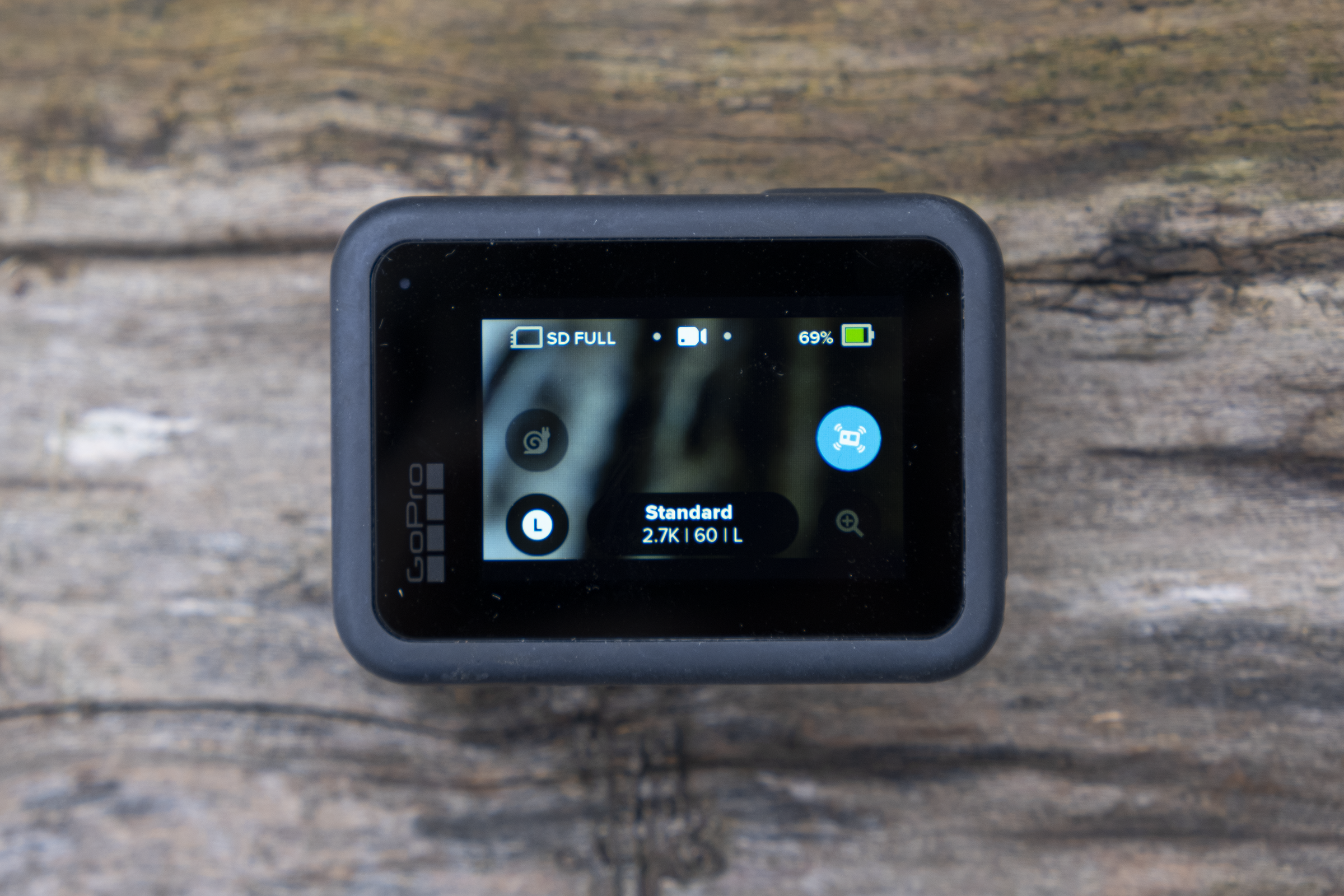
But there are a few niggles. First, its screen is of the same type seen on the Hero 7 Black, and it’s starting to look a bit dated when you compare it to the DJI Osmo Action. That lens also isn’t removable, unlike on previous GoPros, so you can’t add ND filters for super-bright conditions. Cynics might suggest this is to help convince more owners to sign up for its GoPro Plus service, which replaces broken GoPros among other benefits.
I also found the more recessed power button (which you use to change modes) a bit harder to press than its predecessor, particularly when wearing bike gloves.
In addition, while its single battery door on the side is simpler than the two doors of its predecessors (one for the battery, another for the microSD card and USB-C port), it isn’t quite as easy to open and close.
Thankfully, there weren’t any issues with waterproofing, although GoPro did say that my unit was pre-production, so I’ll update this section when I’ve tested the final side door.
Either way, without its Mod accessories, the Hero 8 Black isn’t a great improvement on its predecessor. In some ways – such as the lack of a grippy, rubberised finish on the top and sides – it feels like a slight regression. It isn’t bad, it just isn’t quite the leap forward that you get from the GoPro Max.
Hero 8 Black features and performance – A series of small improvements rather than a radical reboot
The Hero 8 Black mostly refines the Hero 7 Black’s features, rather than introducing new ones.
In fact, only two of these new features – HyperSmooth 2.0 stabilisation and improved audio – are the result of hardware changes, with the rest software tweaks that could (but mostly likely won’t) come to older GoPros.
HyperSmooth stabilisation was introduced on the Hero 7 Black. If you’re not familiar with it, this is GoPro’s form of electronic stabilisation, which helps it correct for bumps and vibrations without cropping your video too much or affecting video quality.
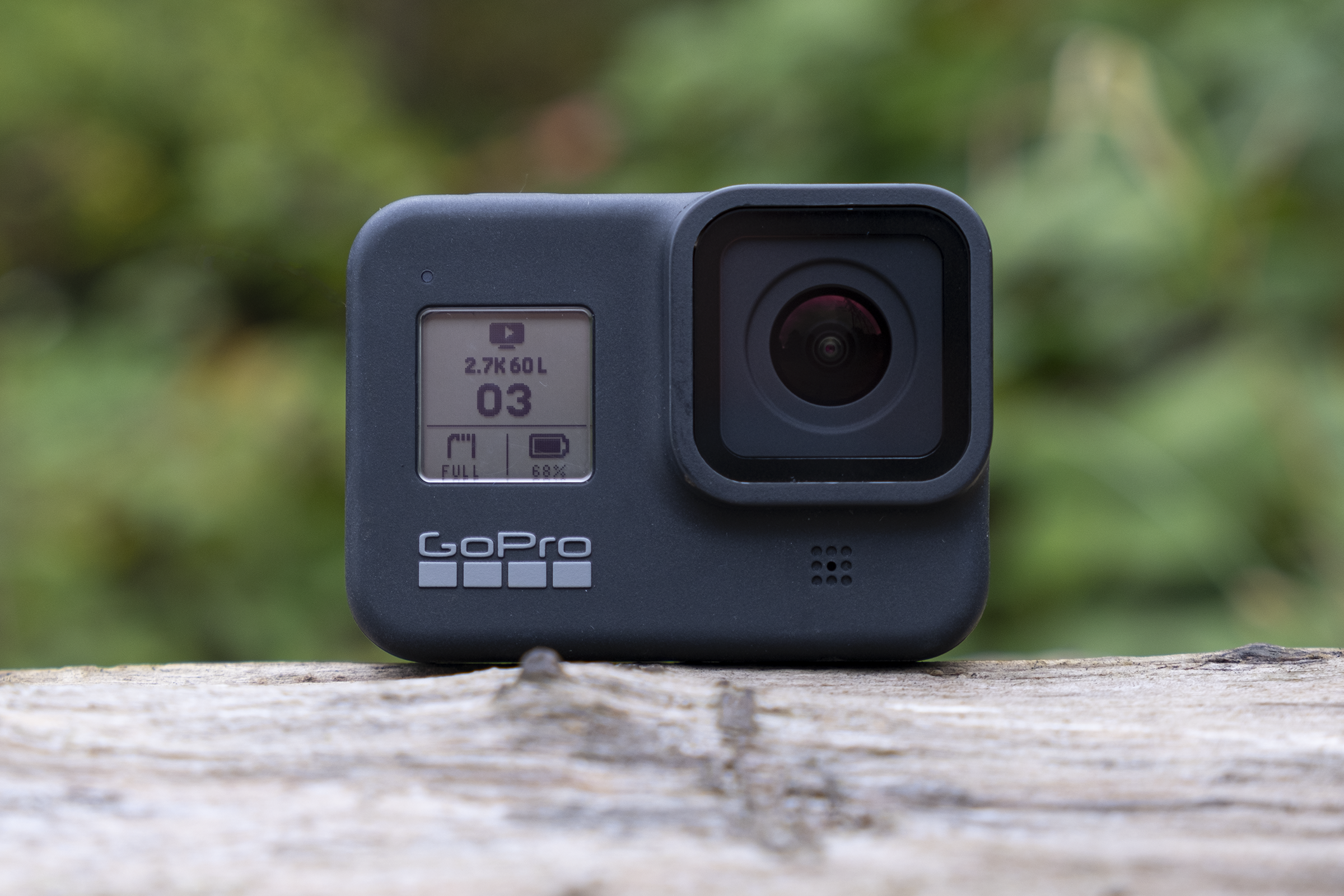
While it worked very well on the GoPro Hero 7 Black, you couldn’t use it in high frame-rate modes at 120fps or 240fps, which are great for slow-motion. That’s changed on the Hero 8 Black – you now get HyperSmooth in all resolutions and frame rates, including 2.7K at 120fps and 1080p at 240fps.
The reason for this isn’t a new processor – it still has the same GP1 chip as its predecessor – but a new battery. This battery is the same size and capacity as GoPro’s standard pack, so old ones will work in the Hero 8 Black, just without these HyperSmooth benefits.
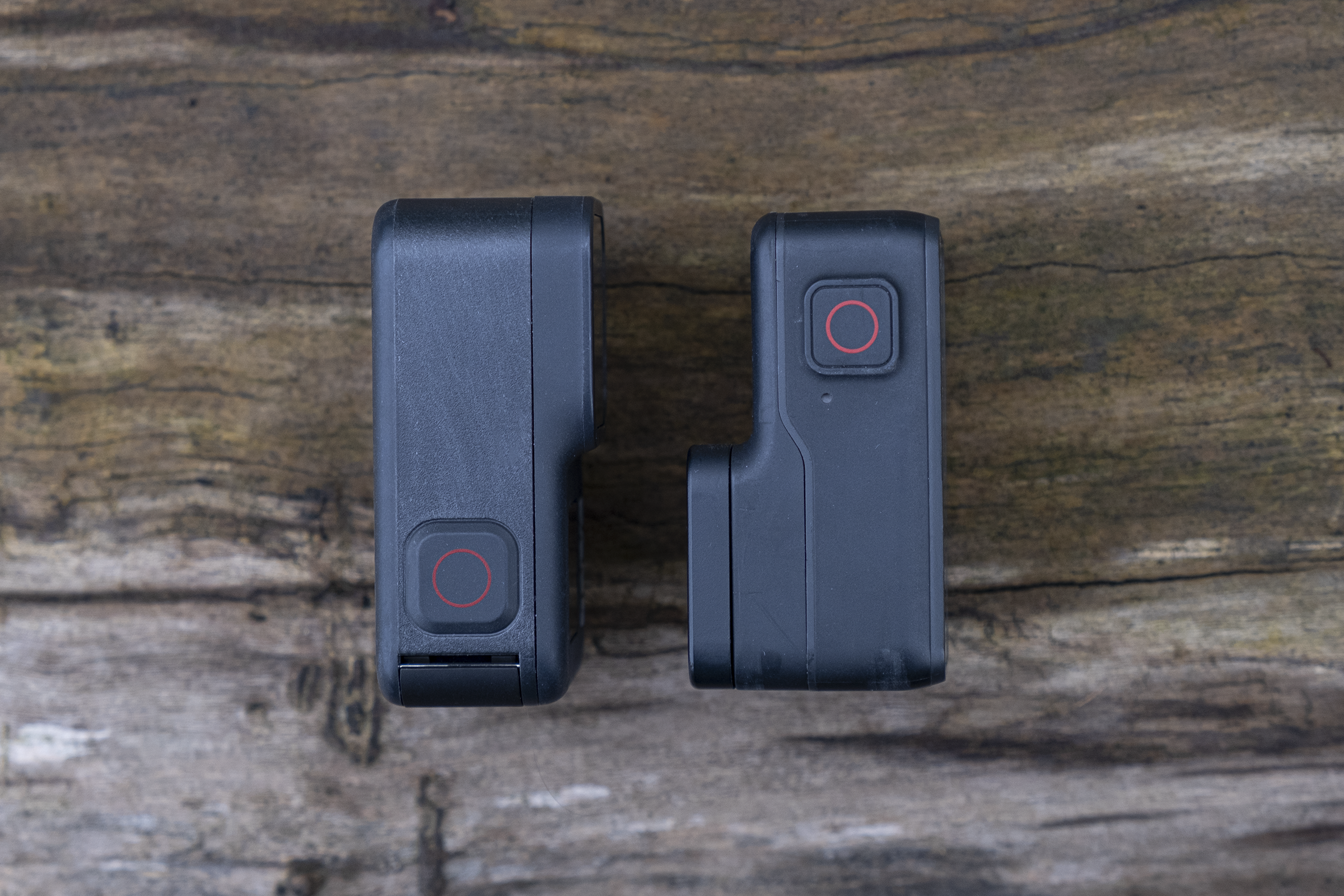
That other new hardware-related feature, improved audio, comes from a new front microphone. Non-action videos such as vlogging or music get a crisper, clearer sound than on the Hero 7 Black, and it also helps to tone down wind noise during bike ride videos.
But it certainly doesn’t boost audio quality to external microphone levels, as GoPro has acknowledged with the forthcoming Media Mod accessory, and isn’t a reason to upgrade from its predecessor.
Otherwise, the main new features are to do with software and usability. You can now create up to 10 presets for your most-used video settings. For example, a 4K/60p with wide field of view for “action” and a 1080p/60p with linear view for “vlogging”. This brings it up to speed with the DJI Osmo Action‘s Custom menu.
The four shortcut buttons around the main video settings are customisable with a long-press, too, allowing you to change them to anything from colour profile (either “GoPro” or the more editable “flat”) to the bit-rate.
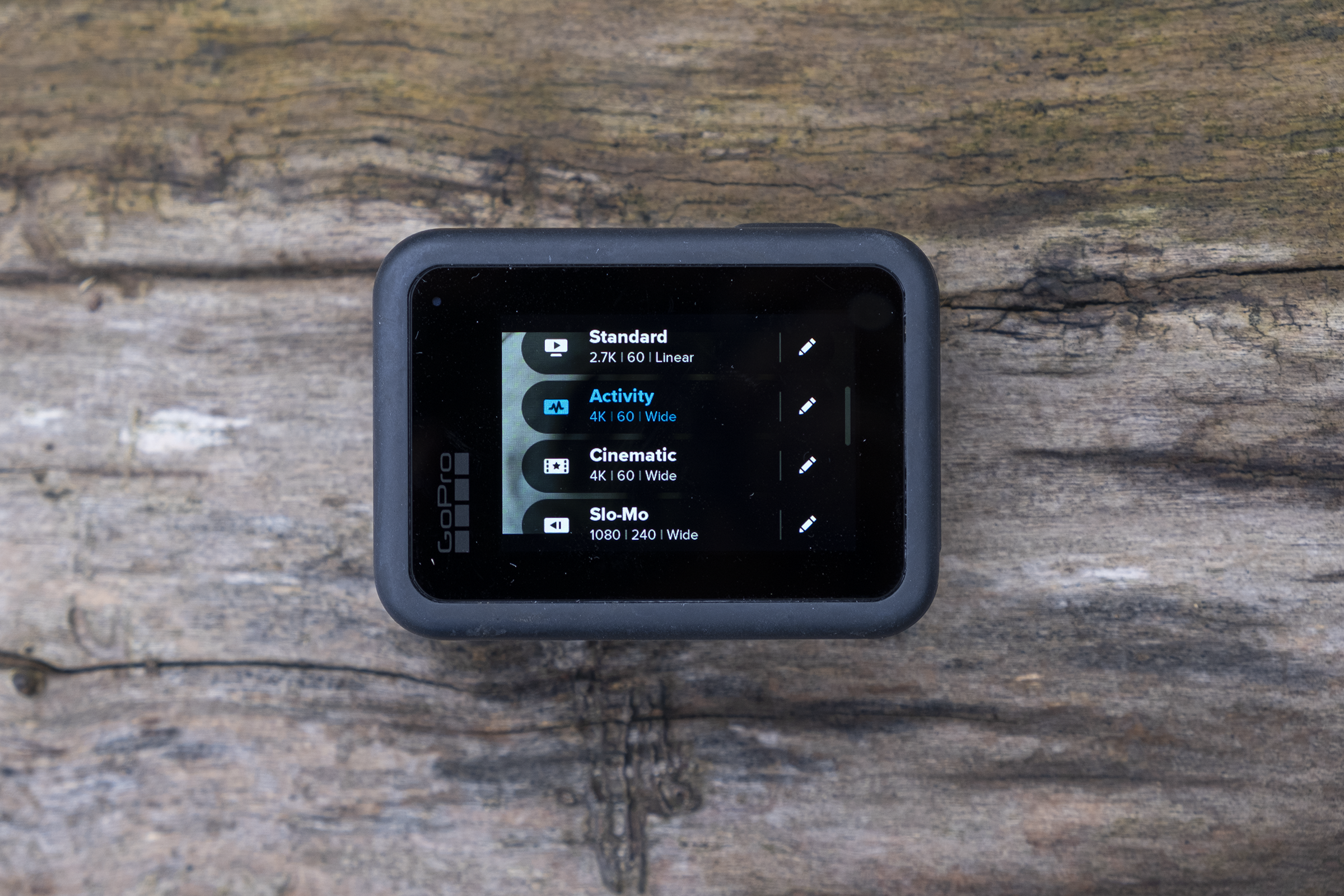
This all makes the Hero 8 Black the most customisable GoPro so far, and perhaps the best model for more advanced users who want to quickly tweak these settings. Yet again, though, this is a small upgrade that should really be available as a firmware option for older GoPros.
As before, you can expect 45 minutes (of 4K footage) or 90 minutes (when shooting at 720p) from a charge. My sample lasted for 47 minutes when shooting 4K/60p continuously, with only a few screen interactions before shutting down due to overheating. I then got an extra 11 minutes out of it, but with more screen tapping it would likely have lasted the claimed 45 minutes in total.
Hero 8 Black video and image quality – A step up from the Hero 7 Black, but not a dramatic upgrade
The Hero 8 Black doesn’t bring any major changes to GoPro’s video or image quality compared to its predecessor. In fact, the slight differences are mostly to do with taste than outright quality.
There were rumours of a 4K/120p mode for the Hero 8 Black but, unsurprisingly for a camera of this size, that hasn’t materialised. The top resolution and frame rate is still 4K/60p, although the Hero 8 Black has a slightly higher maximum bit-rate when recording 4K and 2.7K than its predecessor (100Mbps vs 78Mbps).
What’s the real-world difference between the two when it comes to video quality? While there are small differences, not a huge amount. The “GoPro” colour profile on the Hero 8 black appears to have been tweaked slightly, moving towards a slightly warmer, more saturated look. If you prefer a more contrasty style then you’ll probably prefer it to the Hero 7 Black, but it isn’t a radical difference.
GoPro also seems to have slightly improved the detail capture of its sensor – at times, you can see extra detail in complex scenes (such as brickwork or grass), but only when pixel-peeping. On the other hand, I couldn’t see any major difference in dynamic range when shooting at the same resolutions and frame rates as its predecessor.
This means the Hero 8 Black’s “out of camera” video quality is, like before, excellent – and about as good as you can expect from a camera with a 1/2.3in sensor. It just isn’t really a reason to upgrade from the last two models. HyperSmooth will probably make more of an overall difference to your videos, so those upgrading from older GoPros would be fine with the cheaper Hero 7 Black.
The other shooting modes have been tweaked, too. With HyperSmooth Boost, you get some extra stabilisation at the expense of a larger crop – for most situations, though, the “high” setting will be fine.
TimeWarp 2.0, which is GoPro’s version of the hyperlapse, now has an “auto” mode that automatically detects when scenes need to be slowed down – although there’s always the risk it might choose the wrong moment. It still works best in fast-moving situations where you don’t change your angle of view; think bike rides, boat trips and runs.
One benefit of the GoPro Hero 8 Black when compared to the DJI Osmo Action is the range of its field of views. GoPro calls these “digital lenses” and the four on offer – SuperView, Wide, Linear and Narrow – crop into the frame to reduce its fish-eye look. Linear, which I use the most, is now available when shooting in 4K, which is a boon for those who aren’t fans of that wide-angle aesthetic.
Not many people buy a GoPro for its still photos, but these have been slightly improved thanks to SuperPhoto’s tweaked HDR algorithm, which produces punchier photos than the Hero 7 Black. However, the problem for GoPro is that these are now merely average compared to what today’s flagship smartphones are capable of thanks to their stacking and machine learning wizardry.
Should I buy the GoPro Hero 8 Black?
If you want the best, non-360 action camera available and don’t mind paying a premium for it, then the Hero 8 Black is for you.
Its small video and audio quality improvements, plus that built-in mount, make it the best all-round GoPro so far. Some handy UI changes also make it more customisable and user-friendly than its predecessors (if not the DJI Osmo Action).
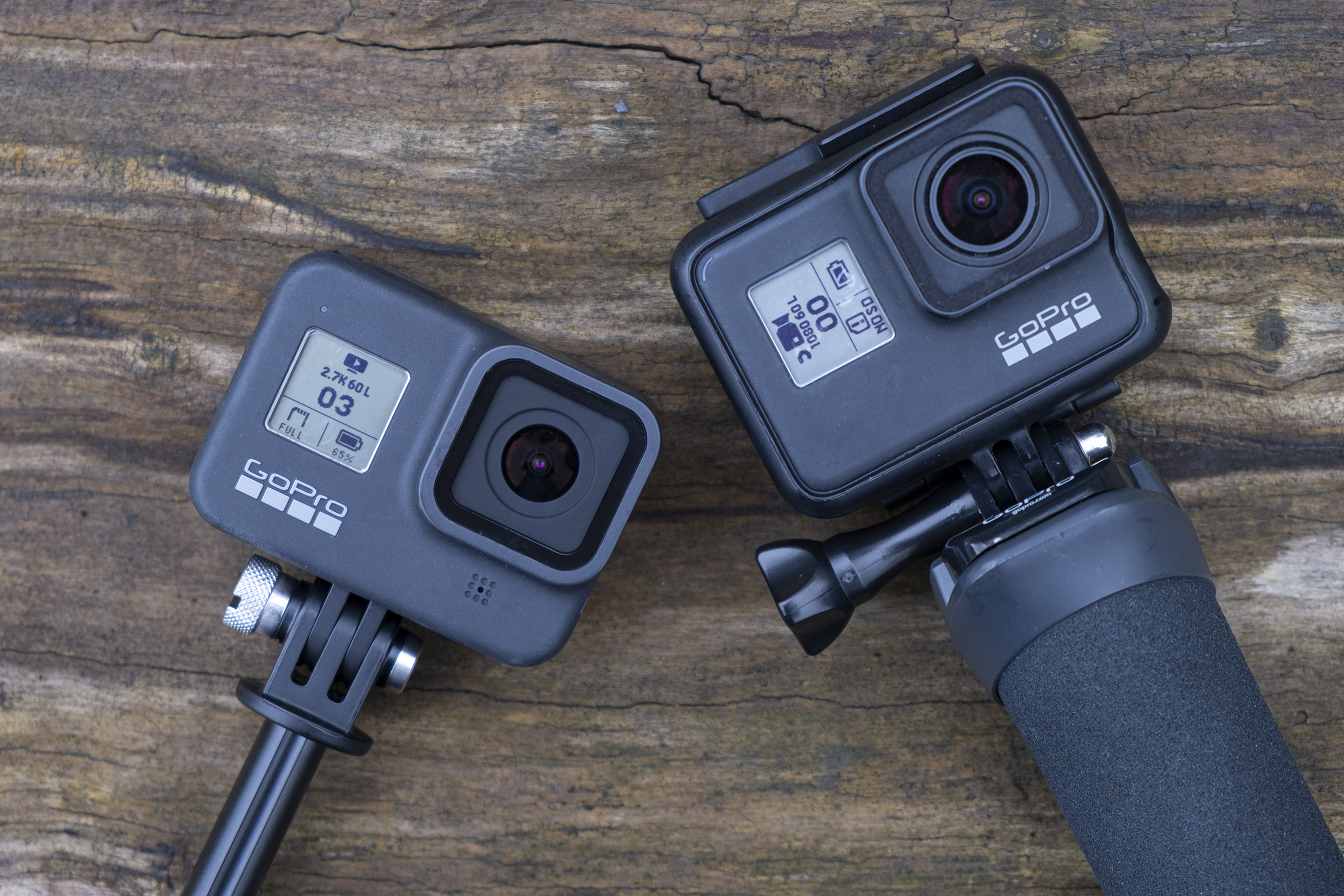
For most people, though, the GoPro Hero 7 Black and DJI Osmo Action offer much better value. In many ways, you’re paying for the Hero 8 Black’s compatibility with those forthcoming Mod accessories, and it isn’t yet clear exactly when they’ll start shipping. Realistically, that might not be until early 2020 or later.
So while those accessories give it great vlogging potential, the Hero 7 Black is currently the better buy for anyone who simply wants a tough 4K camera to shoot sport, travel or holiday videos in places that their smartphone daren’t tread.


